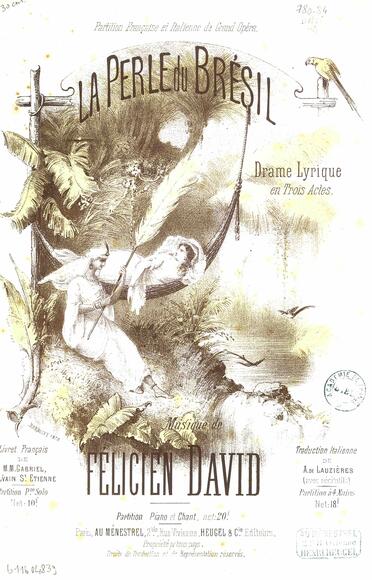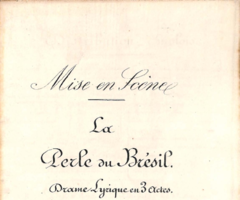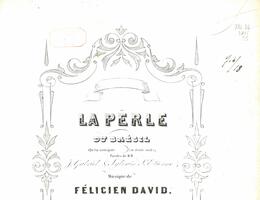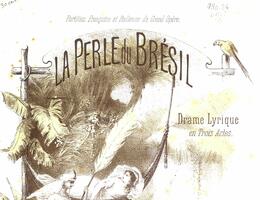La Perle du Brésil

Opéra-comique en trois actes.
Initially written for the Opéra-Comique, then withdrawn due to a disagreement between the theatre management and the librettists, Félicien David’s first stage work was performed on 22 November 1851 during the first season of the Opéra National (soon to be renamed the Théâtre Lyrique). Despite criticism of the libretto by Joseph Gabriel and Sylvain Saint-Etienne, La Perle du Brésil was a resounding success: the work was performed 68 times over the course of the theatre’s first three years (then was programmed 77 times between 1858 and 1864). The subject—more sentimental than dramatic—gave the composer an opportunity to develop descriptive passages (a sea storm) and exotic elements (Brazilian local colour). The work begins with the arrival in Lisbon of the Brazilian princess Zora, who has been brought there by the Portuguese admiral Salvador to receive an education. Lorenz, an officer, falls in love with her and Salvador decides to take her back to Brazil. The second act takes place at sea: on the ship, Lorenz is discovered disguised as a sailor; a storm breaks, distracting Salvador from his rage. The setting of the third act is a Brazilian forest. The crew is attacked by natives who, on hearing Zora sing the hymn to the Great Spirit, realise that she is their princess. The Brazilians and the Portuguese make peace, then Salvador agrees to the marriage of the two lovers. Berlioz did not care much for this work, which is semi-serious in character and displays an eclectic musical approach that owes a particular debt to Weber and Rossini.



